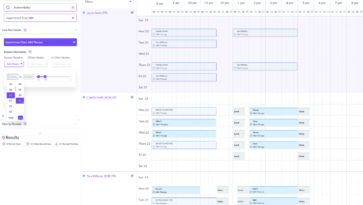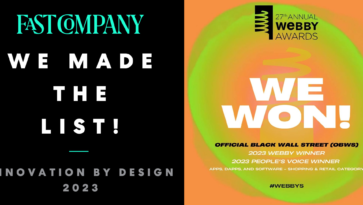On the heels of our 5th Anniversary, Sidebench is already knee-deep in a new endeavor: Sidebench Health. This new strategic direction has been in the works for some time. We wanted to understand a bit more about CEO Kevin Yamazaki’s vision for the healthcare space, so we sat down with him to chat about the purpose of the brand, and why now is the right time to launch into healthcare.
What was the ambition behind Sidebench Health? How did it become what it is today?
So the genesis of Sidebench Health came about pretty organically. Our first healthcare clients actually approached us, not the other way around. From there, our work in healthcare really grew through word of mouth. At first we just thought it was awesome that various healthcare organizations were approaching us, but after a while we started to get a better idea of the impactful work we could do. For years we’d built products that helped consumer brands acquire and engage with millions of people. This was a lot of fun and we developed a strong reputation in doing that, but healthcare was a different kind of challenge that we see as ultimately more purposeful and rewarding. Our team really loved working on these healthcare projects, and it also made sense from a business perspective, so we came up with a new strategic vision for entering the healthcare space, and Sidebench Health was born.
Has it been as difficult as you thought? I know you heard plenty about the difficulties of working in healthcare, but it seems like you haven’t experienced the same barriers.
It was a challenge, yes, but not in the ways we expected. We actually thought that the hardest part of going all-in on healthcare was figuring out how to design for users that weren’t ourselves — when it comes to consumer brands and millennials, we know that landscape extremely well. But because we’ve always adopted a design-focused mindset of “learn, learn, learn”, that part actually wasn’t so bad. We have great in-house UX architects and UI designers who are great at user research, and that’s a fantastic tool to have no matter what industry you’re in. We approached our healthcare clients like we did our consumer brand clients, and spent a ton of time building bridges with stakeholders like CIOs, CMOs, and IT leadership, and also did our due diligence when it came to user research. The big challenge has actually been navigating healthcare organizations that can seem quite opaque to an outsider. But even with this problem we benefited from our experience in consumer brands — we’d worked with big complicated global companies before, so we leveraged a lot of what we learned to work with big complex healthcare organizations.
Why do you want to start Sidebench Health now and invest in a healthcare specific team?
The timing is really great for entering the healthcare space because of the combination of emerging technology trends and the change in patient and provider behavior. Technology always changes of course, but the really important thing is that big healthcare organizations are now really invested in building these technological competencies. There are tons of very forward thinking organizations like Inland Empire Health Plan, or the Cedars Sinai’s of the world that have incorporated digital innovation into their long-term strategy already. On the other hand, there are also a lot of healthcare organizations that are a little newer to the technology space. At the same time, patients are increasingly receptive to, and even expectant of, tech competency with their healthcare organizations which is why essentially everybody is thinking about how to do it. The huge opportunity for us is being a part of these organizations as they embark on the journey to build more technological innovation into their culture, and helping to guide them through a landscape of fragmented and sometimes poorly designed solutions.
With so many competitors in the space, what makes Sidebench Health unique and special?
One of our big advantages is that we’ve quite successfully taken all the lessons we learned about mobile solutions, user engagement, and user-centric design, and translated that into our own internal framework for innovation in healthcare. The second thing that really sets us apart is the breadth of the work we’ve done both in and outside of healthcare. We’ve worked on everything from the redesign of practice management systems, so behavioral health apps, the patient portals, to virtual reality for healthcare. This kind of broad experience is what has enabled us to take the long-term strategic view when it comes to being a digital innovation partner for large healthcare organizations.
What are you most excited for?
We’ve already gotten the opportunity to build first-in-kind products, and we’re looking forward to partnering with others to do more of that in the near future. The other exciting thing is that we’re getting invited to the table at the early stages of strategic planning in an industry that’s traditionally been closed off to younger people without decades of healthcare experience. What we’re seeing is that even at the board level, there’s a newfound appreciation for a diversity of backgrounds and opinions, and there’s a real understanding of the value that can be brought from other industries like tech, advertising, and social media.
Our new initiative, Sidebench Health, was launched on Monday, June 19. Please visit the site to learn more at health.sidebench.com.
—
This article was originally publishedon Medium







